Skydiving is one of the most exciting sports. Nothing compares to the feeling of excitement and the adrenaline rush you get when you float on an air cushion and control a parachute. However, skydiving is always accompanied by a huge number of myths and misconceptions that stop millions of people from experiencing this exciting experience. Statistics from recent decades prove that this sport is incredibly safe. But in order to practice it regularly, you will have to study for a long time and also get a special license. It is a long and expensive process, but it is worth it. If you have never jumped with a parachute, you should try it at least once in your life.
1. Parachute opening ring
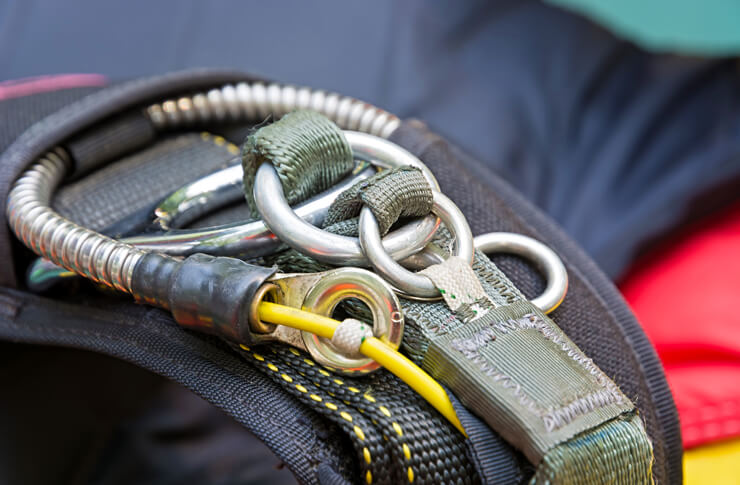
Myth: Skydivers pull a ring to open a parachute.
In fact, ring-type parachutes were last manufactured in the 1980s. Modern skydivers use a new “ring” (a clever invention that includes a harness, container, and canopy) – a pilot chute attached to the main one. The pilot chute fills with air, thereby pulling the main one, which then opens above your head. It’s safe to say that if you want to jump with a parachute, you definitely won’t have to pull anything.
2. Conversations during free fall

Myth: You can shout and talk to each other while free falling.
There is no doubt that you will not be able to hear another skydiver while free falling. Sure, if he shouts right into your ear, you might understand something, but you will definitely not be able to hold a conversation. The wind that rushes past your ears at 160 kilometers per hour makes you practically deaf. In addition, it is very difficult to fight while free falling.
3. Release the parachute

Myth: When the parachute opens, you are pulled backwards.
This is one of the most common misconceptions. The only thing a parachutist can't do is come back. What you see when the parachute opens is an optical illusion. After all, the videographer filming the parachutist continues to fall, while the parachutist slows down.
4. Unconscious fall
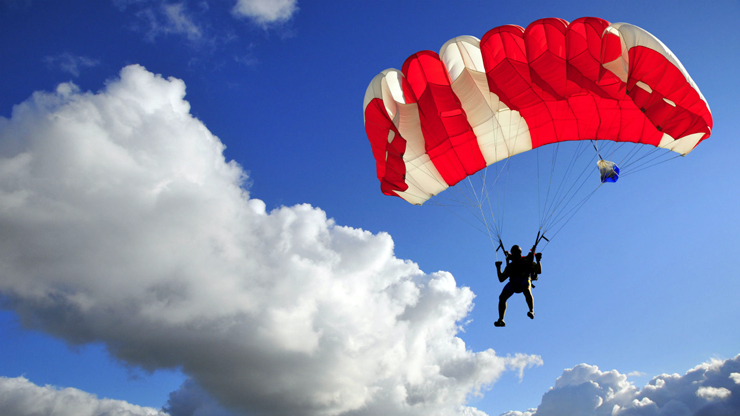
Myth: If you lose consciousness during free fall, you will die.
In fact, in modern skydiving there is a special device that automatically opens the parachute. But experienced skydivers refuse to use it, fearing technical failures. If you lose consciousness during landing, the landing will most likely be more difficult, and you can get injured or even die, but these chances are negligible.
5. Fall speed
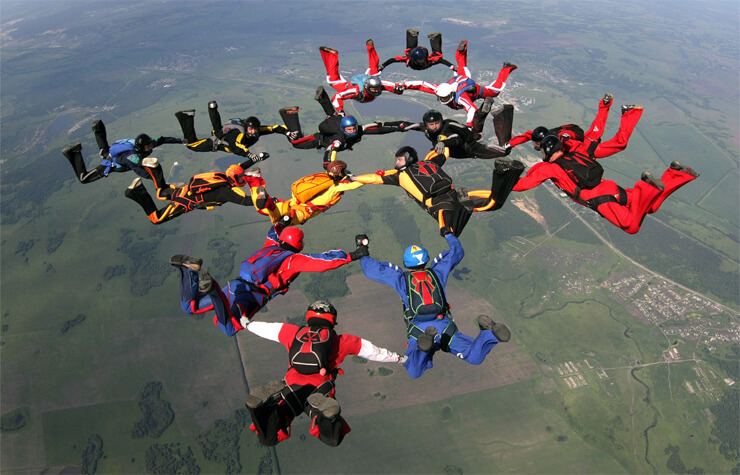
Myth: Everyone falls at the same speed.
Many people think that the speed of falling depends on the weight of the person (the more the person weighs, the faster he or she falls). This is not true. The position of the body and clothing (baggy clothes slow down, and tight clothes speed up) have the greatest impact on speed. It is known that the average speed of falling is about 200 km per hour. However, some advanced skydivers jump in the "head down" or "sit-fly" position, which allows them to reach speeds of up to 300 kilometers per hour! It's all about aerodynamics. Of course, it takes a lot of training to master such techniques as the "arch" (to speed up) or the "bowl" to slow down and catch up with a group of other skydivers.
6. Packing the parachute

Myth: The parachutist always folds his own parachute.
A good skydiver learns to pack his own parachute, and does so throughout his career. However, there is no law that says that everyone must pack their own parachute. There are special people who are in the landing zone and can pack your parachute. The cost of such a service is about 5-7 dollars. But despite this, many skydivers still prefer to pack it themselves, to their own taste, and would you want to trust someone with your life? If you decide to use the services of a packer, be sure to leave him a very good tip. Just in case.
7. Parachute opening altitude

Myth: You can open your parachute at any altitude.
The parachute should be opened when the skydiver has leveled off and is in full control of his body. It should not be opened too low, as you must take into account the time it takes for it to unfold. Speed and wind also matter. The minimum height at which the parachute should be opened is 700 meters (for licensed parachutists). It is said that during World War II, soldiers opened it at a height of 70 meters, and although most of them died from such experiments, many modern parachutists are thinking about repeating a similar stunt. You should not play with fate and your endurance, because you can pay for it with your life.
8. Oxygen mask

Myth: At high altitude, you must wear an oxygen mask.
Only on a plane. Hypoxia can start at an altitude of 5 kilometers, so oxygen masks should always be available on planes. Usually they jump from a height of 3,000-4,000 meters. But there are also “extra-high” jumps from 7,000 m. Of course, you will need “extra money” for this. Some planes offer masks, but usually it’s just a tube hanging from the ceiling where you can breathe oxygen until you jump. Once you jump, you are at that altitude for only a couple of seconds, so there is no need for an oxygen mask.
9. Danger of heights

Myth: The greater the height, the more dangerous the jump.
It's the exact opposite. Skydivers want to jump from the highest possible height. Not only does this give them more time to enjoy the free fall, but it also gives them the opportunity to fix any problems that may arise. To reach top speed, you need about 500 meters (190 km/h). Considering the 200-300 meters it takes for the parachute to open, jumping from less than 900 m is just crazy.
10. Equilibrium speed

Myth: A person can survive extreme speed impact.
We have all heard stories like this: "A man jumped from 5,000 kilometers, his parachute did not open, he landed in a mud field and only broke his leg, or he ended up in a wheelchair, but survived!" There is always something wrong with such stories. Most often, they are simply made up, or their nuances are hidden. Perhaps one of his parachutes did not open, or both (which is very rare), but even a half-opened parachute will significantly slow the fall. And if you land on a soft surface or trees, at a speed of 70 kilometers per hour, you really can stay alive.
11 Interesting Facts About Skydiving
Skydiving is one of the most exciting sports. Nothing compares to the feeling of excitement and the adrenaline rush you get when you float on an air cushion and control a parachute. However, skydiving is always accompanied by a huge number of myths and misconceptions that stop millions of people from experiencing this exciting experience. Statistics from recent decades prove that this sport is incredibly safe. But in order to practice it regularly, you will have to study for a long time and also get a special license. It is a long and expensive process, but it is worth it. If you have never jumped with a parachute, you should try it at least once in your life.
1. The average speed of free fall of a person who jumped out of an airplane at full speed - with a parachute or just thinking that he forgot to turn off the iron at home - is 50 m/s or 180 km/h.

2. The athlete flies a distance of 3000 meters before the moment the parachute opens in one minute.
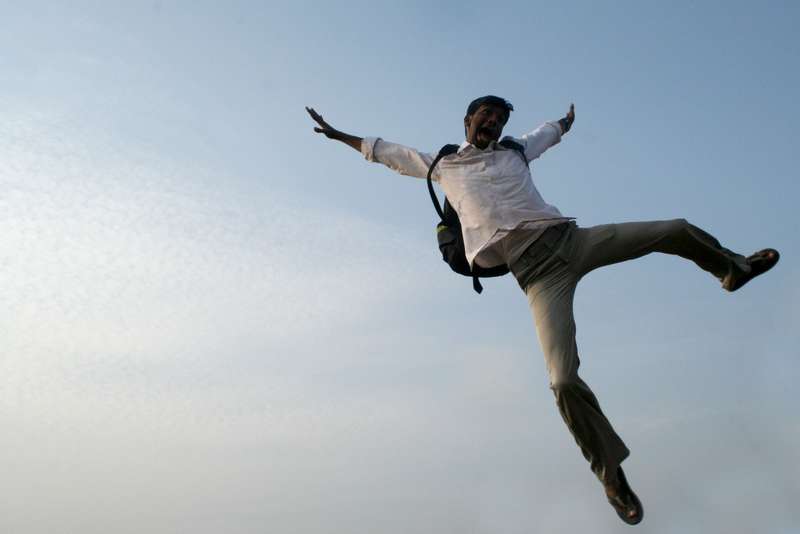
3. According to the results of the US Hang Gliding Association research, for every hundred thousand living parachutists there are twenty-five who crash. Thus, parachuting is one of the safest types of extreme activities.
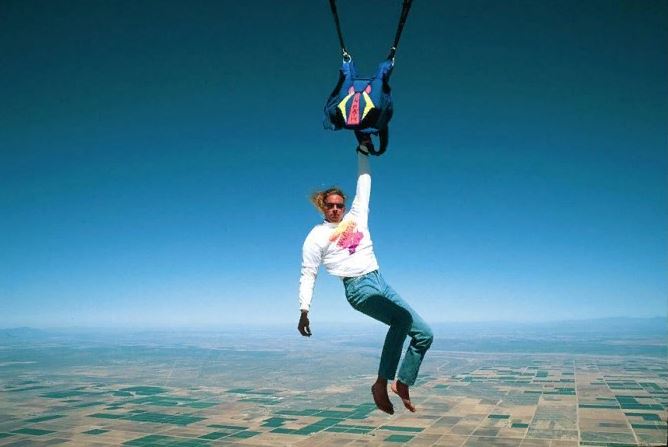
4. Jumping with a parachute and talking are absolutely incompatible things, no matter how much the directors of American action movies try to convince us otherwise.
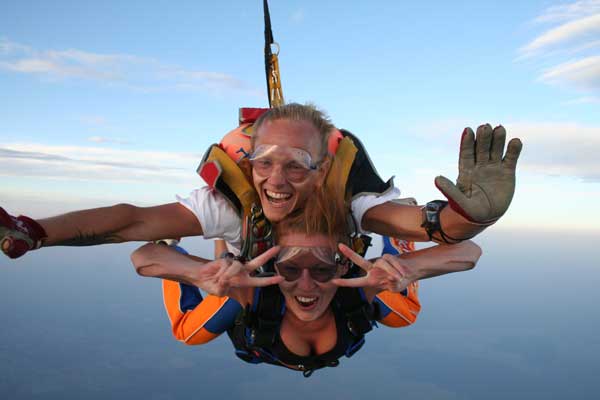
5. “If a man has a tent of starched linen, each side of which is 12 cubits wide and the same high, he can throw himself from any great height without exposing himself to any danger,” wrote Leonardo da Vinci long before the advent of parachuting.
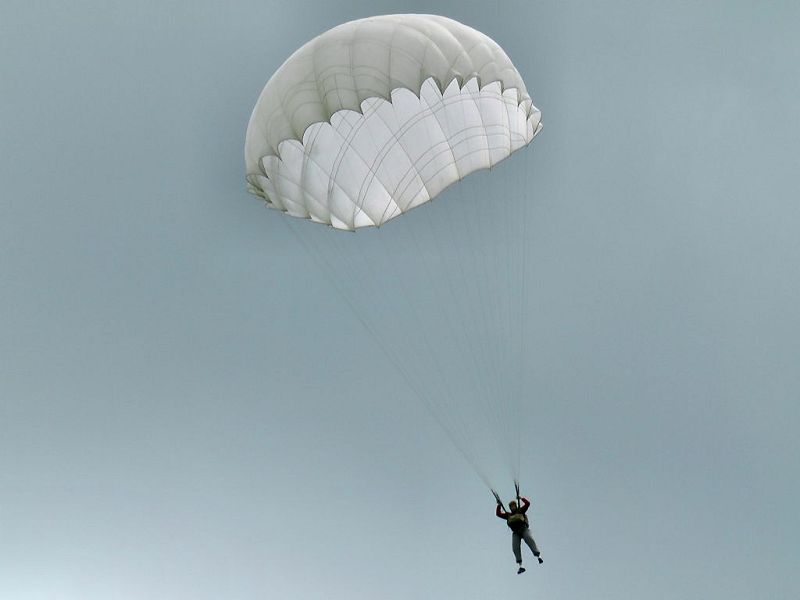
6. The first daredevil to jump with a parachute from an airplane (before that, people jumped from hot air balloons) was American Albert Berry in 1912. Moreover, before jumping with a parachute, Albert had to get to the metal container where he was located. And the container was attached to the fuselage, so the brave Berry had to first move to the chassis of the car and fasten the parachute there.

7. In Russia, the first parachute jump was made on May 17, 1917 by Staff Captain Sokolov, who jumped out of a balloon for this purpose. The next day, the same feat was performed by Second Lieutenant Anoshchenko, who knew nothing about his predecessor. Imagine the second lieutenant's disappointment when he learned that he had been passed over! He even thought about challenging the staff captain to a duel, but then the revolution began, and both had no time for parachutes and duels.

8. Until recently, the most daring parachutist was considered to be US Army Captain Joseph Kittinger, who jumped from a height of 31,332 meters. He used a stratospheric balloon to ascend, and a special spacesuit to avoid burning up during the fall. But he was surpassed in all respects by extreme parachutist Felix Baumgartner, who stepped into the abyss from a height of 38,600 meters. Felix's free fall speed reached an insane 1,342 km/h.
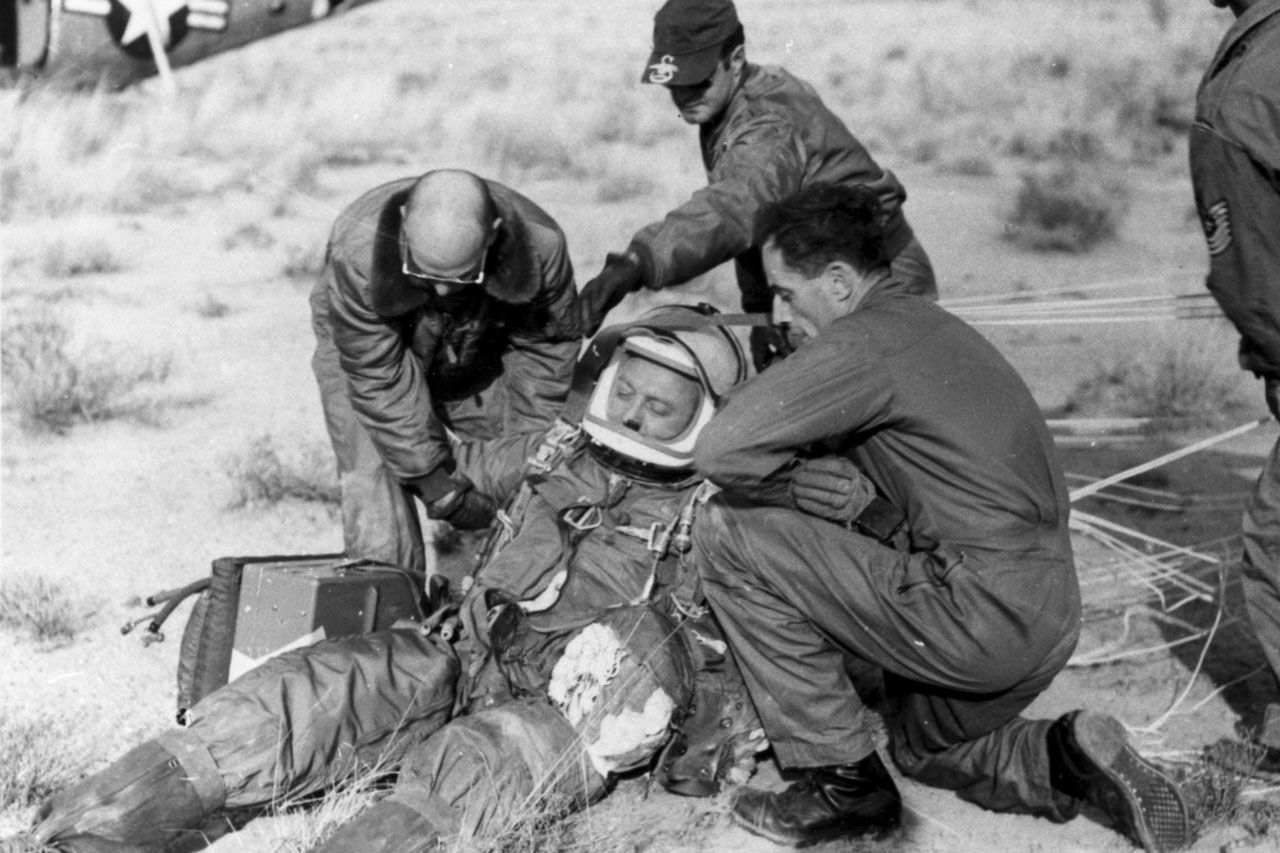
9. The lowest parachute jump from a height of 9-12 m was made by the British pilot Terek Spencer in April 1945. The reason was not the modesty of the Englishman, but simply his plane was shot down over the Bay of Wismar in Germany.

10. The oldest skydiver is George Moise, who jumped in tandem with an instructor from a height of 3000 m at the age of 97. This is how the grandfather celebrated his birthday, saving on a party.
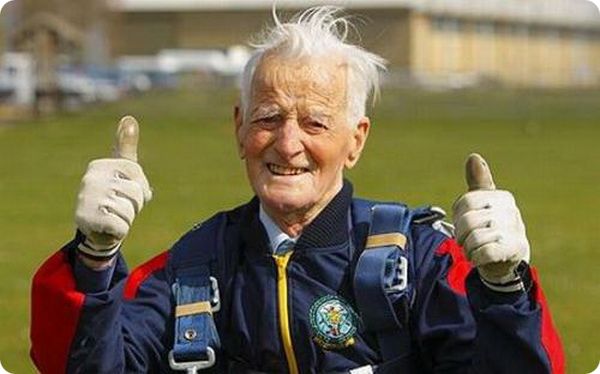
11. To get into the Guinness Book of Records in 2007, the Japanese came up with the "Banzai" jump. A parachute is thrown out of a plane, and a person falls out after it. He must catch the parachute, put on the system and open the canopy before reaching a critical height.

10 Skydiving Accident Survivors
Skydiving is actually relatively safe. According to most sources, about 30 out of 100,000 jumps end in death (on average). A person is more likely to die in a car accident than from a parachute jump. To put this into perspective, scuba diving has a higher death rate, on average, about 47 out of 100,000 dives.
It's generally accepted that you have about as much chance of dying from jumping out of a functioning airplane as you do swimming in shark-infested waters. Yet hundreds of thousands of people jump out of planes every year – professionally, recreationally, and competitively – and the vast majority reach the ground safely and in one piece. There's one catch to skydiving, though: when something does go wrong – a parachute fails to open, or some other malfunction – you're left with very few options. Hurtling toward the ground at speeds in excess of 100 miles per hour… well, you can imagine how that's likely to end.
Surprisingly, not every skydiving accident ends with a pile of bloody, broken body parts. In fact, there are quite a few people who have experienced heartbreaking incidents in the air:
1. Daniel Farr

Picture this situation and decide whether it’s really worth making your first tandem jump (in which you are attached by your parachute to another person, usually an experienced skydiver) with an instructor who could die in midair. Daniel Farr is a U.S. Army soldier specializing in military intelligence. His girlfriend gave him a ticket to go skydiving as a Christmas present. Farr’s tandem partner was a man named George “Chip” Steele, an experienced skydiver with more than 8,000 jumps under his belt. He jumped out of the plane, free-falled for a while, and then deployed his parachute as expected.
Everything seemed to be going smoothly until it all went to hell. Farr noticed that Chip was not responding to his questions or actions (actually, the lack of any actions) regarding his approach to the ground. Although the military had given young Farr no professional parachute training, they had taught him how to remain calm under extreme conditions. Farr, finding himself in this situation, took control of the parachute – just like he had seen on TV, of course – and managed to maneuver quite well, avoiding the approaching trees, and eventually landed safely near the designated landing zone. Farr then unsuccessfully administered CPR to Chip. The coroner later stated that Chip had suffered a heart attack.
However, one harrowing experience was not enough to discourage Mr. Farr from jumping. He expressed a desire to jump again, despite his parents' protests.
2. Dave Hageman (and a guy named Frank)

This incident took place in 1985 in Victoria, Australia. Mr. Hadjman was jumping from about 12,000 feet as part of a group of skydivers. Things went wrong when Hadjman inadvertently opened his parachute while directly above another skydiver (a guy named Frank). Frank also didn't see Hadjman and opened his parachute at about the same time as Hadjman. The two skydivers were trying to occupy the same space at the same time. As a result, Dave fell right on top of Frank.
The force of the impact knocked Frank unconscious and tangled the lines of both deployed parachutes. Frank's remained open and filled with air, while Hadjman's deflated and collapsed, leaving the men tightly bound. Also, since one parachute was now essentially supporting the weight of two men, they fell faster than would be expected in such a situation, eventually crashing into a crowded parking lot - amazingly, they landed right between several parked cars. And they survived.
Hadjman suffered some pretty extensive injuries, while Frank emerged from the ordeal relatively unscathed. To his credit, Hadjman returned to parachuting from perfectly functioning airplanes once his injuries healed.
3. James Bull

Mr. Buhl is a television reporter who specializes in filming (and participating in) skydiving and BASE jumping. BASE jumping, for those unfamiliar with the term, is a sport that involves jumping off fixed objects (such as mountains and bridges) and waiting until the last possible second to deploy your parachute. Dangerous stuff.
It was during one of these shoots that Mr. Buhl got into trouble. Buhl and his partners were making a jump for a documentary in Russia. Buhl, concentrating on filming, relied on his broadcast partner to report back as they approached the ground and needed to deploy their parachute. Communications problems prevented this, and instead of deploying, Buhl met the snow-covered ground. Falling 2,000 meters at well over 100 miles per hour usually spells a gruesome end. However, the Briton crashed into what appeared to be a snowbank in the middle of rocky terrain. Buhl suffered a broken back and ribs, but was otherwise not too battered. The incident, ironically, was caught on film.
4. Ivan Chisov
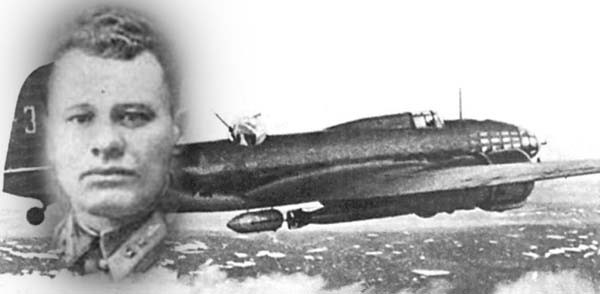
Chisov deserves a place on this list because of his bravery, which allowed him to survive the situation. Ivan Chisov was a lieutenant in the Soviet Air Force during World War II. During a combat mission, Chisov's bomber was attacked and heavily damaged by German fighters. At the time, Chisov's bomber was flying at an altitude of over seven thousand meters. The extent of its damage required the crew to immediately abandon the plane.
The problem was (apart from the fact that he was jumping out of a disintegrating plane) that when Chisov actually had to leave the plane, there were quite a few German planes around, and pilots were very fond of shooting at tempting targets (like a helpless pilot hanging in the air under a gliding parachute). Chisov jumped out of the plane, deciding not to open his parachute for most of the ongoing air battles. Not a bad idea.
Unfortunately for Chisov, he lost consciousness while in free fall. A sharp fall at about 150 miles per hour – and Chisov’s unconscious body hit a snowy ravine, rolled, flipped, and crashed to the ground. But… despite a broken pelvis and a spinal cord injury, Chisov quickly recovered and flew for several more months. Now that’s dedication!
5. Laris Butler
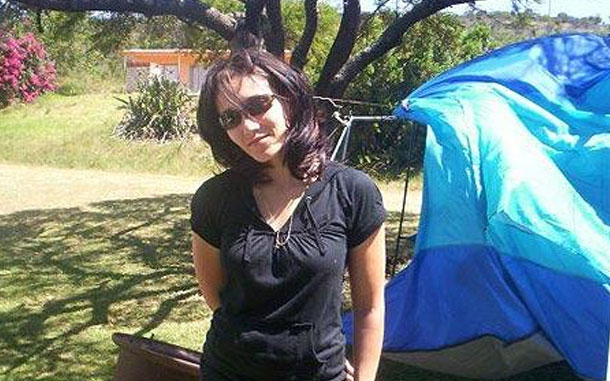
Parachute malfunctions can happen anywhere. A young South African woman named Laris Butler experienced this first-hand during what she thought was a routine skydive in 2010. The story begins like any other such incident – a routine exit from a plane, followed by a routine, unremarkable freefall (if you can call falling like a stone to the ground “unremarkable”).
But what happened next forced Butler to turn to prayer as a last resort. First, she tried to open her parachute. It didn’t open. After several fruitless attempts, she tried the same with her reserve parachute. It didn’t open either. One can only imagine the blood-curdling fear that grips a person at such a moment. Ms. Butler said her only recourse was prayer. She recalls thinking, “Please, Lord, save me.” God, as they say, hears and answers the prayers of the faithful. The impact with the ground from 3,000 feet left Ms. Butler with a broken leg and a concussion, but alive.
But here's what makes this story even more interesting: The girl says she changed her mind about jumping when she was already standing in the doorway of the plane, but the instructor literally pushed her out of the plane, ignoring her protests. Butler describes how she was holding onto the door frame, and the instructor had to push her several times to get her out of the plane. Isn't that illegal?
6. Hans Lang

BASE jumping has been mentioned before in this article. Waiting until the last second to open your parachute seems to provide the most excitement. However, Mr. Lang got a little more than the usual euphoria during a BASE jump that went horribly wrong in 2008. Jumping off a mountain in Norway, Lang learned what bad planning, daring, and a lack of wings can do together. Put simply, it spells trouble for people jumping off mountains.
The mountain Lang jumped from was 1.5 kilometers high. Lang was flying at about 150 km/h near a steep cliff. What could have gone wrong? Realizing that he and the cliff were too close to each other, Lang tried to open his parachute to fly away from it. Unfortunately, in this battle of man versus cliff, the cliff won. Lang hit rocks sticking out of the cliff several times, and his parachute lines got tangled, preventing him from slowing his fall. The flight ended with Lang crashing into a tree at the foot of the mountain at high speed.
Not many people can say they've survived a fall from a mountaintop, but Lange can. Not only did Lang survive, but he only suffered a broken leg, of all things. Not bad, considering the circumstances. The experience certainly didn't deter Lang, who promised to return to BASE jumping once he recovered from his injury. Oh, and it was all caught on video, of course!
7. Gareth Griffiths

Mr Griffiths, a professional rugby player in his native Britain, is no stranger to the physicality of the sport. But that did not prepare him for the tragedy that befell him during a tandem skydive. Paired with experienced instructor Michael Costello (who happened to be a Massachusetts man), Griffiths was about to attempt a routine jump that had been safely performed thousands of times before.
However, on this day, things went completely wrong. After jumping out of the plane and enjoying the free fall for a while, the instructor tried to open the parachute. For some unknown reason, the parachute opened incorrectly and the instructor did not have time to straighten it out as they both fell towards the ground. Costello's last effort saved Gareth's life: a few seconds before hitting the ground, he flipped over so that his body was between the ground and Griffiths.
Gareth survived, but suffered a severe back injury. Doctors were shocked that Griffiths had survived the impact with the ground at such a high speed – even with Costello’s efforts to reduce the damage from the impact with his own body. However, he survived, and Michael Costello’s selfless sacrifice certainly played a role.
8. Laverne Everett

At the age of 80, Miss Everett had only one unfulfilled wish – she really wanted to jump with a parachute. With tandem skydiving becoming more popular and accessible, Miss Everett finally decided to… take the plunge! Remember what happened in one of the previous stories? Well, to her horror, much the same thing happened. Everett’s resolve visibly weakened as she looked out the door and into the open sky – her knees buckled. Her jump partner, to whom Everett was strapped, gave her a little push toward the exit in an attempt to encourage her, and then they jumped out of the plane.
Unfortunately, it turned out that Everett wasn't as securely attached to her partner as they thought. Almost immediately, Everett began to slip out of her bindings.
Remember that Everett didn't have her own parachute, as only the instructor has one for these types of jumps. Everett's partner had to hold her up with his hands to keep her from crashing into the ground. Even the cameraman who jumped with them to film the jump tried to get closer to help, but to no avail. Everett was left hanging on to her partner as he desperately tried to hold her up.
Amazingly, Everett, who seems to have nerves of steel, didn't even scream once during the flight. She later said in an interview that she wasn't even that scared. Her partner was able to hold her down, and they both landed safely. Everett only suffered a few bruises and scrapes from the landing. But she'll have something to tell her grandchildren. And yes, it was all caught on camera.
9. Nicholas Alkemade
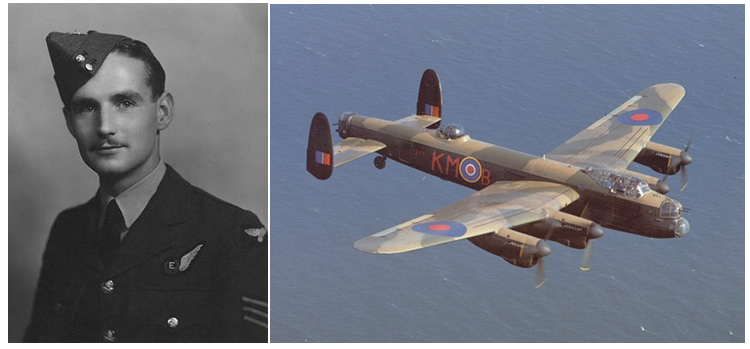
The Nicholas Alkemade incident isn't technically a skydiving incident, but it's still pretty damn exciting. During World War II, the guy was in the Royal Air Force, and he was part of the crew of a British bomber that was attacked by German fighters. Alkemade's bomber was badly damaged, caught fire, and went out of control. He had two options: burn to death inside the plane, or die when the plane hit the ground.
Deciding that none of these options worked for him, Alkemade decided to jump out of the plane without a parachute (it went up in flames!). The bomber was 18,500 feet above the ground when Alkemade made that…important decision. He jumped. The brave Briton flew through snow-covered fir trees, which cushioned his fall, and landed in a deep snowdrift. The pilot reportedly escaped with only a sprained ankle and shock. After landing, he looked around and lit a cigarette. Even the Germans who captured Alkemade were shocked by the story and wrote him a document confirming the truth of what had happened to him. That’s how it was.
10. Shayna Richardson/West

Shayna Richardson (West by marriage) experienced something no one should have to experience, especially on their first solo jump, while pregnant. Unfortunately, the accident happened to this young woman from Joplin, Missouri. The story made so much noise in the media not only because of the incredible fact that Shayna survived what she did, but also because she found out she was pregnant in the hospital where she was taken after the incident.
Shayna's story begins almost immediately after she jumped from the plane. As soon as she opened her parachute, she went into a violent spin. Realizing that there was a problem (whether it was due to faulty equipment or her inexperience is still debated among her fellow skydivers), Shayna cut the lines of her main parachute and opened her reserve. This also did not help, because her reserve parachute also failed (again, either due to her inexperience or faulty equipment). Shayna continued to spin and fell at over 50 miles per hour into a nearby parking lot, face down.
Shayna broke her pelvis in two places, suffered a broken leg, and lost several teeth. But most importantly, her unborn child, who she didn't know about at the time of the jump, was unharmed (Sheyna gave birth to a healthy baby boy the following June). The accident was captured on video. After that, Shayna jumped with a parachute again to prove to herself that she could do it, but after this last jump, she quit jumping. Finally, someone had some common sense!












